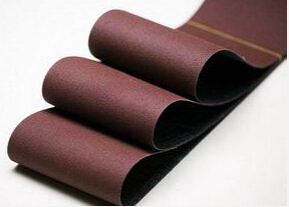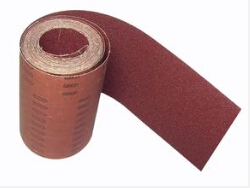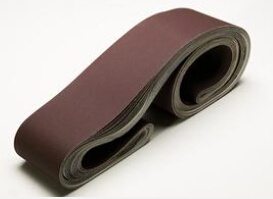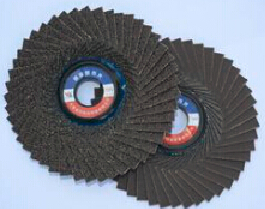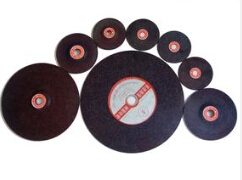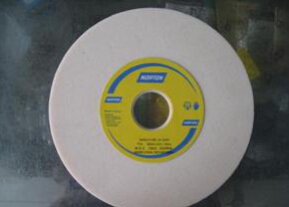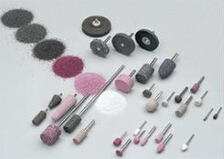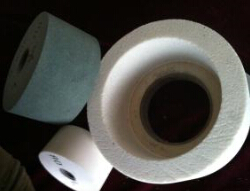Sand Blasting Introduction
Zhongsen Editor 2022-04-24Sand blasting is a process of cleaning or modifying the surface of parts by strong impact of abrasive. Its main uses are:
(1) Remove the molding sand and oxide scale on the surface of castings, forgings or parts after heat treatment.
(2) Remove the corroded carbon, welding slag, old paint layer or other dry oil substances on the surface of the parts.
(3) Improve the surface roughness of parts to improve the adhesion of coating or other coatings.
(4) Remove burrs or directional wear marks of parts
(5) Spray on glass or ceramic
(6) Make the part diffuse and dull
(7) Sandblasting cutting tools to improve their service life
(8) Sand blasting is divided into dry blasting and wet blasting. The processing surface of the former is relatively rough and suitable for the processing purposes of the above items 1 ~ 6. The application of the latter is similar to dry sand blasting, but it is often used for more precise processing. It also has the advantage of less pollution.
Note: parts with heavy oil stain shall be degreased before sand blasting.
Dry Sand Blasting
The abrasives used for dry sand blasting can be steel sand, alumina, quartz sand, silicon carbide, etc., but quartz sand is the most widely used in China. Abrasives of different substances can be selected according to the requirements of part materials, surface conditions and processing.
There are two kinds of dry sand blasting: mechanical sand blasting and air pressure sand blasting, each of which is divided into manual, non automatic or continuous automatic methods. Manual air pressure sand blasting machine is widely used in China, and it also uses medium and small parts with various complex shapes.
Wet Sand Blasting
The abrasive used for wet sand blasting is the same as that used for dry sand blasting. The abrasive and water can be mixed into mortar. The abrasive generally accounts for 20% - 35%, which can be stirred continuously to prevent sinking. Compressed air can be pressed into the nozzle to spray the parts, or sand and water can be put into the tank respectively, mixed before flowing to the nozzle, and then sprayed into the parts. In order to prevent the corrosion of steel parts, sodium nitrite and other corrosion inhibitors must be added into the water. In addition, the sand should be dried before the next use.
The equipment of wet sand blasting machine also has many forms, and the most commonly used is sand blasting room.
Shot Peening
Shot blasting is similar to sand blasting, except that steel shot or glass shot is used to replace the abrasive used for sand blasting. Shot blasting can produce compressive stress on parts, and there is no dust pollution containing silicon. This process is mainly used for:
(1) Make the parts produce compressive stress and improve their fatigue strength and stress corrosion resistance.
(2) Correct the twisted thin-walled parts.
(3) Instead of the general cold and hot forming process, large thin-walled aluminum parts are formed, which can avoid the residual high tensile stress on the surface of the parts and form favorable compressive stress.
It should be noted that the use of parts after shot peening should not be too high, otherwise the compressive stress will be eliminated and the expected effect will be lost. The use temperature limit depends on the part material. For example, the general steel parts are about 260 ~ 290 ℃, and the aluminum parts are about 170 ℃
(2) Types of pills
1. Cast steel shot: its hardness is generally 40-50hrc. When processing hardware metal, the hardness can be increased to 57-62hrc
Cast steel shot has good toughness and is widely used. Its service life is several times that of cast iron shot
2. Cast iron shot: its hardness is 58-65hrc. It is brittle and easy to break. It has short service life and is not widely used. It is mainly used in occasions without shot peening and high strength.
3. Glass shot: the hardness is lower than the first two. It is mainly used for stainless steel. Titanium, aluminum,, magnesium and other materials that do not allow iron pollution can also be used for secondary processing after steel shot peening to remove iron pollution and reduce the surface roughness of parts.
(3) Shot peening process
For shot peening that requires compressive stress on the surface of parts, it must have sufficient coverage, which is difficult.
Moreover, it is difficult to make quantitative judgment, so the method of controlling the shot peening intensity is often adopted, that is, the method of requiring a certain degree of sandblasting, that is, the required stress value can be obtained only after a certain degree of sandblasting intensity is reached. The shot peening intensity is mostly described in the American SAE standard j442
Almen altimeter for measurement:
Almen altimeter is a 1070 cold rolled steel with standard size of 0.8, 1.3 or 2.4 mm thick. Compared with 70 carbon steel in China, its hardness is 44-50 HRC. The shot peening strength can be obtained by measuring the arc height of bent steel bar style with altimeter. Shot peening strength is mainly affected by the following factors:
(1) Shot peening size: the larger the shot peening, the greater the impact energy, the greater the shot peening strength, and the lower the shot peening coverage. Therefore, it is beneficial to minimize the shot peening size on the premise of producing the required shot peening strength.
In addition, the selection of shot peening size is also limited by the shape of shot peened parts, and its diameter shall not exceed half of the radius of the inner circle of the groove. The shot peening particle size is generally 2.00-0.30mm
(2) Shot peening hardness: when its hardness is greater than that of the part, the change of shot peening hardness value will not affect the shot peening strength. On the contrary, the decrease of shot peening hardness value will reduce the shot peening strength.
(3) Shot peening speed: with the increase of shot peening speed, the shot peening intensity will increase, but too high speed will increase its crushing amount.
(4) Spray angle: when it is in the vertical state, the shot peening intensity is the highest. Therefore, shot peening is generally carried out in this state. If it is necessary to spray at a small angle due to the limitation of part shape, the shot peening size and speed shall be increased appropriately.
(5) Broken shot: the shot peening intensity of broken shot peening is low, so the broken shot should be removed frequently to ensure that the integrity of shot peening is not less than 85%. In addition, the broken shot with sharp corners will scratch the parts.
The equipment of shot peening is basically the same as that of sand blasting equipment, but some auxiliary devices are required to strictly control the shot peening process.

